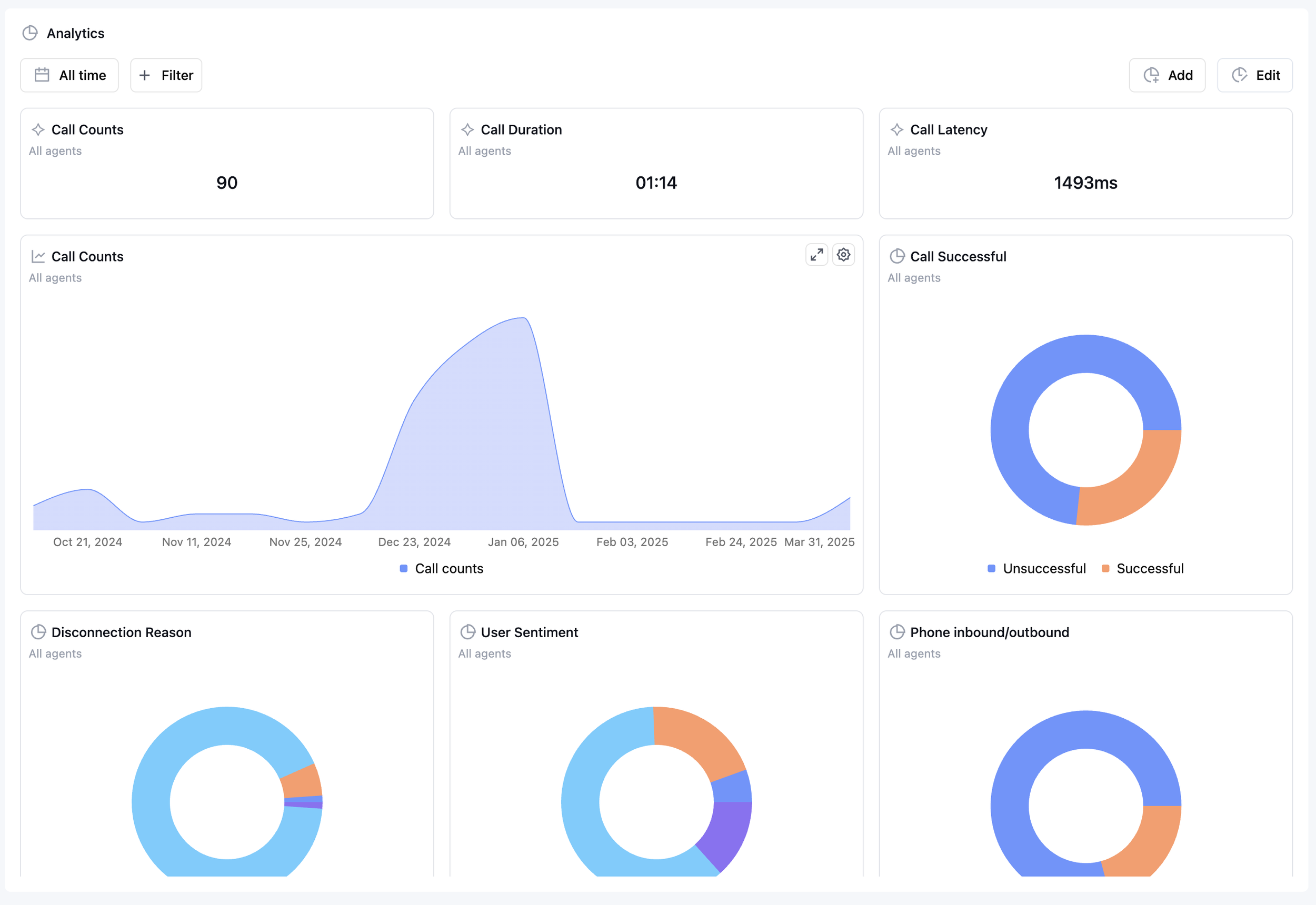Voice AI Agents Still Need Humans
Most voice AI projects stop when the agent goes live.
That’s where we start watching.
Your agent might be handling thousands of calls per week, but scale doesn’t forgive sloppiness—it amplifies it. A small issue repeated 1,500 times becomes a brand problem. A slightly confusing moment becomes hundreds of lost conversions.
We don’t let that happen.
At Waboom.ai, we stay in the loop not because agents break, but because conversations can always be better.
What We’re Really Doing After Launch
We’re not just fixing bugs. We’re sharpening performance.
We listen, review, analyse, and improve. Because the agent isn’t just there to answer questions—it’s there to get outcomes.
That might mean:
Converting faster
Rephrasing a message to land better
Detecting a hesitation and offering help earlier
Moving through a repeat issue more efficiently
It’s not about the agent "going off script"—we build with safety rails.
It’s about making the script smarter every week.
Red Flags We Automatically Monitor
We build in detection triggers so we can flag risk before it becomes a problem:
Satisfaction score drops below 7
Call duration spikes 30%+ over baseline
Transfer rates trend upward week-over-week
Frustration keywords like “unacceptable” or “manager” appear
Once flagged, we deep-dive:
Review call transcripts where the issue appeared
Test different user prompts to observe how the agent responds
Isolate specific prompt or flow sections causing the problem
This helps us fix with precision—not assumptions.
Targeted Improvements
It’s not about rewriting everything. It’s about fine-tuning what matters.
Before:
"I understand you're having trouble with your account. Let me help you with that. There are several things we can check, that you have stated.
I will check your account, and see what your last order was and retrieve your Order number and the product you purchased..."
After:
"I can help with your account issue. Let me check your recent activity."
That small shift improves clarity, confidence, and call speed.
This Isn’t Maintenance. It’s Performance Management.
Too many businesses treat voice AI as a “set-and-forget” tool.
That’s how performance stalls. And how customers quietly disengage.
With Waboom.ai, you get a proactive partner—continuously listening, improving, and tuning every interaction to match your brand, your business logic, and your customer goals.
Humans Still Matter: Inside Our Managed AI Optimisation Cycle
Every voice AI agent we deploy has one thing in common:
It’s supported by a human expert who keeps it sharp.
At Waboom.ai, we don’t just ship and forget. We stay hands-on—because performance isn’t static, and neither is your business.
Meet Sarah,
She’s our Client Success Manager. Right now, she’s managing 12 active voice agents across healthcare, retail, finance, and more. But her job isn’t to "monitor" it’s to improve.
Sarah’s Weekly Optimisation Loop
Monday – Data Review
She reviews weekend call logs across all agents.
She looks for red flags: dips in satisfaction scores, longer call times, missed conversion opportunities, rising transfer rates.
Any anomalies are flagged for investigation.
Tuesday to Thursday – Investigation & Iteration
She dives into transcripts, listens to key calls, and runs targeted prompt tests in a safe staging environment.
Each adjustment is small but surgical tuned to reduce friction, speed resolution, or improve tone.
Friday – Execution & Reporting
Clients get a performance snapshot:
What changed, what improved, and what’s going live.
Nothing is pushed into production without testing and validation.
The Results Speak for Themselves
<24-hour response time to critical issues
15%+ performance lift per client, per quarter
Over 87% client satisfaction across all verticals
Problems caught before clients even notice them
This is what managed AI really means.
Not support. Not babysitting. But proactive, expert-led performance improvement—every week.
How We Use the Retell Dashboard to Optimise Every Conversation
The Retell.ai dashboard isn’t just a reporting tool it’s our daily command centre for keeping your voice agent sharp, fast, and effective. Here’s how we use it to drive performance across every call:
First-Call Resolution Rate
We track how often issues are fully resolved on the first call. If that number drops, it signals friction in the flow or knowledge gaps we need to fix.Call Duration Trends
We monitor average call length to understand pacing. If conversations are dragging, we investigate why—then tighten prompts or reduce unnecessary steps.Knowledge Base Accuracy
Every response is matched against the KB. If the agent pulls incorrect or irrelevant content, we know instantly and update the source material or retrieval logic.Sentiment Shifts
Retell flags tone changes in the customer’s voice—positive, neutral, or frustrated. We use that data to identify moments that need rewording, escalation, or empathy.Conversion Signals
For sales-driven agents, we track where the call loses momentum. If a product pitch falls flat or a buyer hesitates, we optimise that moment—fast.Transfer Frequency
Escalations are sometimes necessary—but too many transfers kill efficiency. We review who’s transferring, when, and why, then coach the flow to reduce over-reliance on humans.

